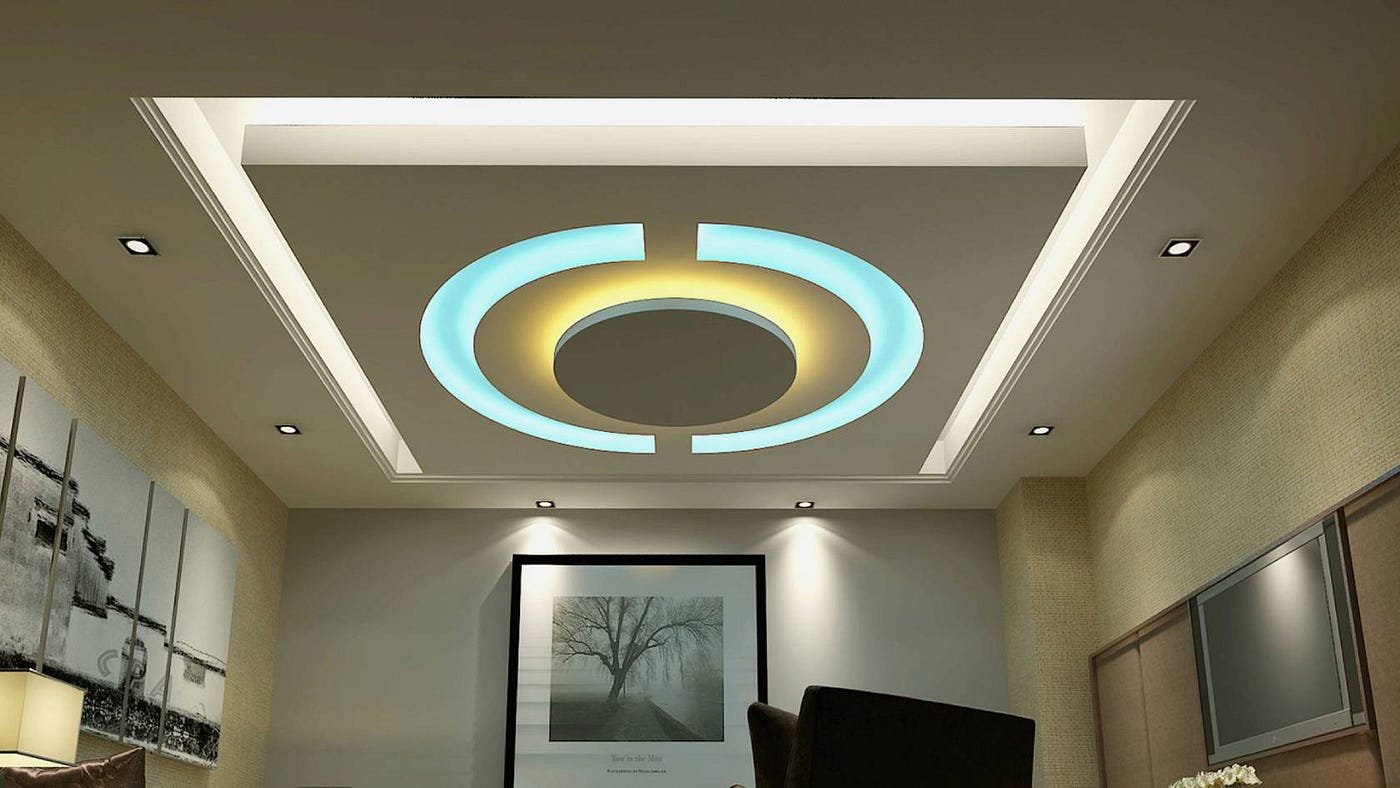

A false ceiling, also known as a suspended ceiling, drop ceiling, or T-bar ceiling, is a secondary ceiling installed below the main ceiling of a room. It offers several advantages and can be a great way to enhance the aesthetics and functionality of a space.
Here's a breakdown of key aspects of false ceilings:
Benefits of False Ceilings:
Concealment: False ceilings can effectively hide electrical wires, plumbing pipes, air conditioning ducts, and other mechanical equipment in the ceiling cavity, creating a cleaner and more finished look.
Improved Acoustics: Certain false ceiling tiles can absorb sound, reducing noise levels and improving the overall acoustics of a room, especially in large open spaces.
Lighting Options: False ceilings allow for the installation of recessed lighting fixtures, providing more flexibility and control over the lighting in a room.
Climate Control: The space between the false ceiling and the main ceiling can be used for improved air circulation and insulation, potentially reducing energy costs.
Easy Maintenance: False ceiling tiles are often easy to remove and replace, allowing for access to wiring and other utilities for maintenance or repairs.
Aesthetics: False ceilings can add a decorative element to a room. They come in various colors, styles, and materials to complement your interior design.
Types of False Ceilings:
Grid System: This is the most common type, utilizing a metal grid framework suspended from the main ceiling. Ceiling tiles are then placed within the grid.
Coffered Ceilings: These have a recessed grid pattern that creates a more decorative look, often used in traditional or high-end spaces.
Baffle Ceilings: These use suspended panels or strips to absorb sound, commonly used in office spaces, auditoriums, and areas requiring noise reduction.
Materials for False Ceilings:
Mineral Fiber: The most common and affordable option, offering good sound absorption and fire resistance.
Metal: Durable and moisture-resistant, often used in kitchens or bathrooms.
Wood: Provides a warm and aesthetic look, but can be more expensive.
PVC: Lightweight and water-resistant, a good option for high-humidity areas.
Installation:
False ceiling installation can be a DIY project for experienced handy homeowners, but it often involves electrical work and might be best left to professional installers, especially for complex designs or large areas.
Here are some factors to consider before installing a false ceiling yourself:
Electrical Knowledge: If the installation involves electrical wiring for lighting fixtures, it's crucial to have the necessary knowledge and safety precautions in place.
Weight of Materials: Certain ceiling tiles, especially metal ones, can be heavy and require proper support from the grid system.
Ceiling Height: Installing a false ceiling can reduce the overall height of your room. Ensure it will still meet your needs after installation.
If you decide to hire a professional installer, here are some tips:
Get quotes from multiple contractors: Compare pricing and experience before making a decision.
Ensure they are licensed and insured: This protects you in case of any accidents or damages during installation.
Discuss your needs and preferences: Clearly communicate your desired outcome, including the type of ceiling, materials, and lighting options.
Overall, false ceilings offer a versatile and functional solution for various residential and commercial spaces. By considering the benefits, types, materials, and installation options, you can determine if a false ceiling is the right choice for your needs and choose the best approach for a successful outcome.